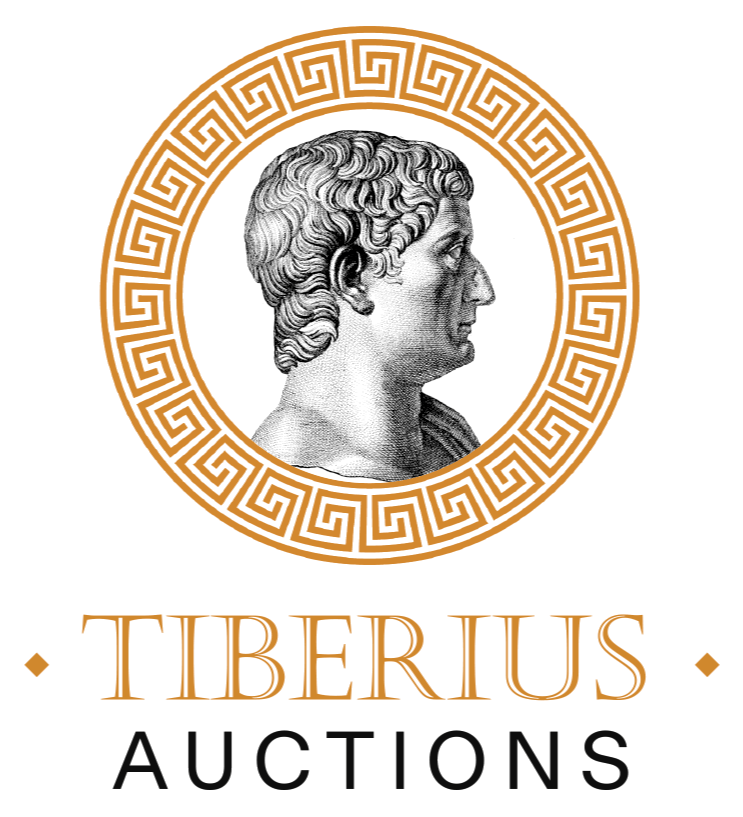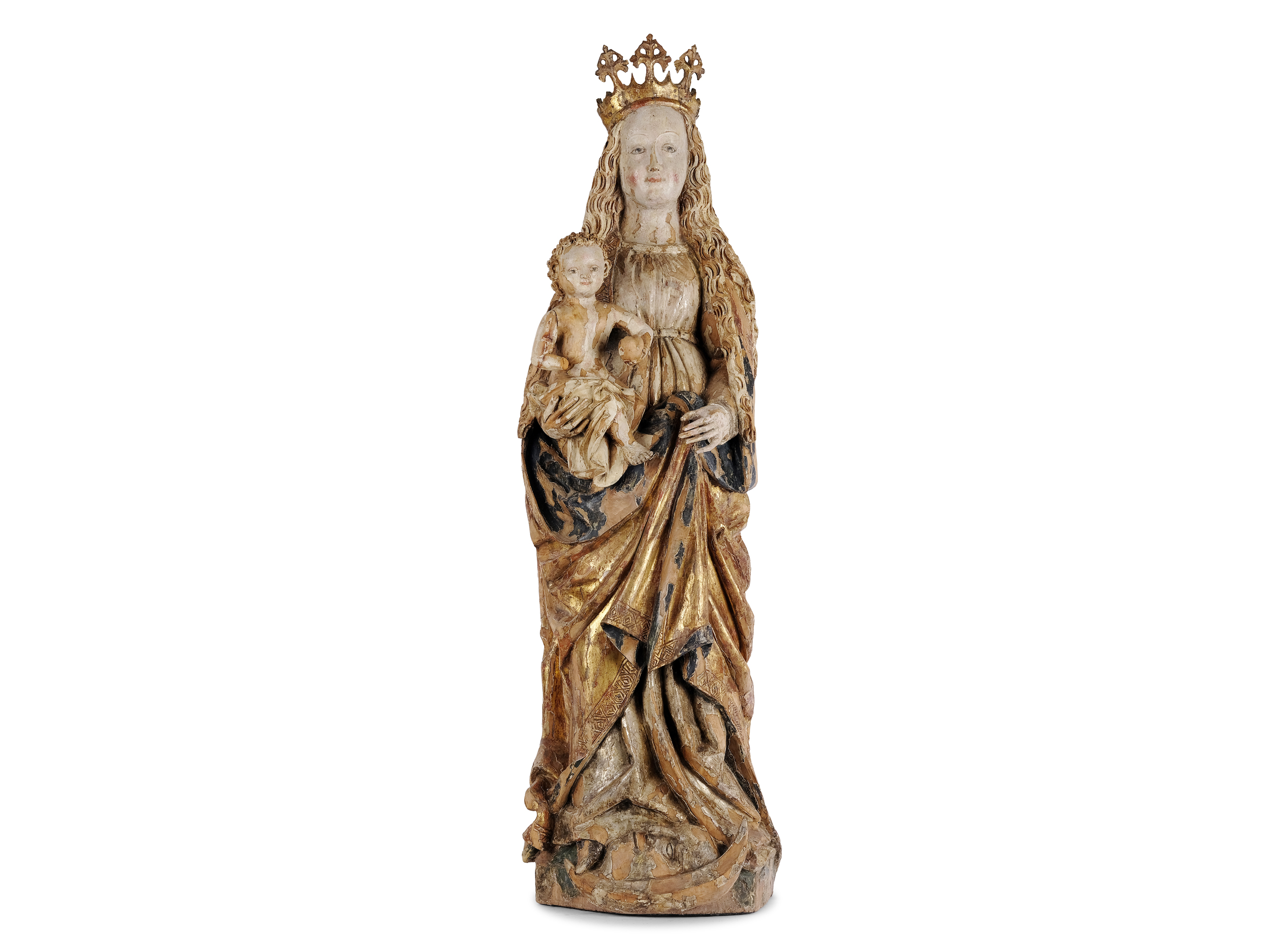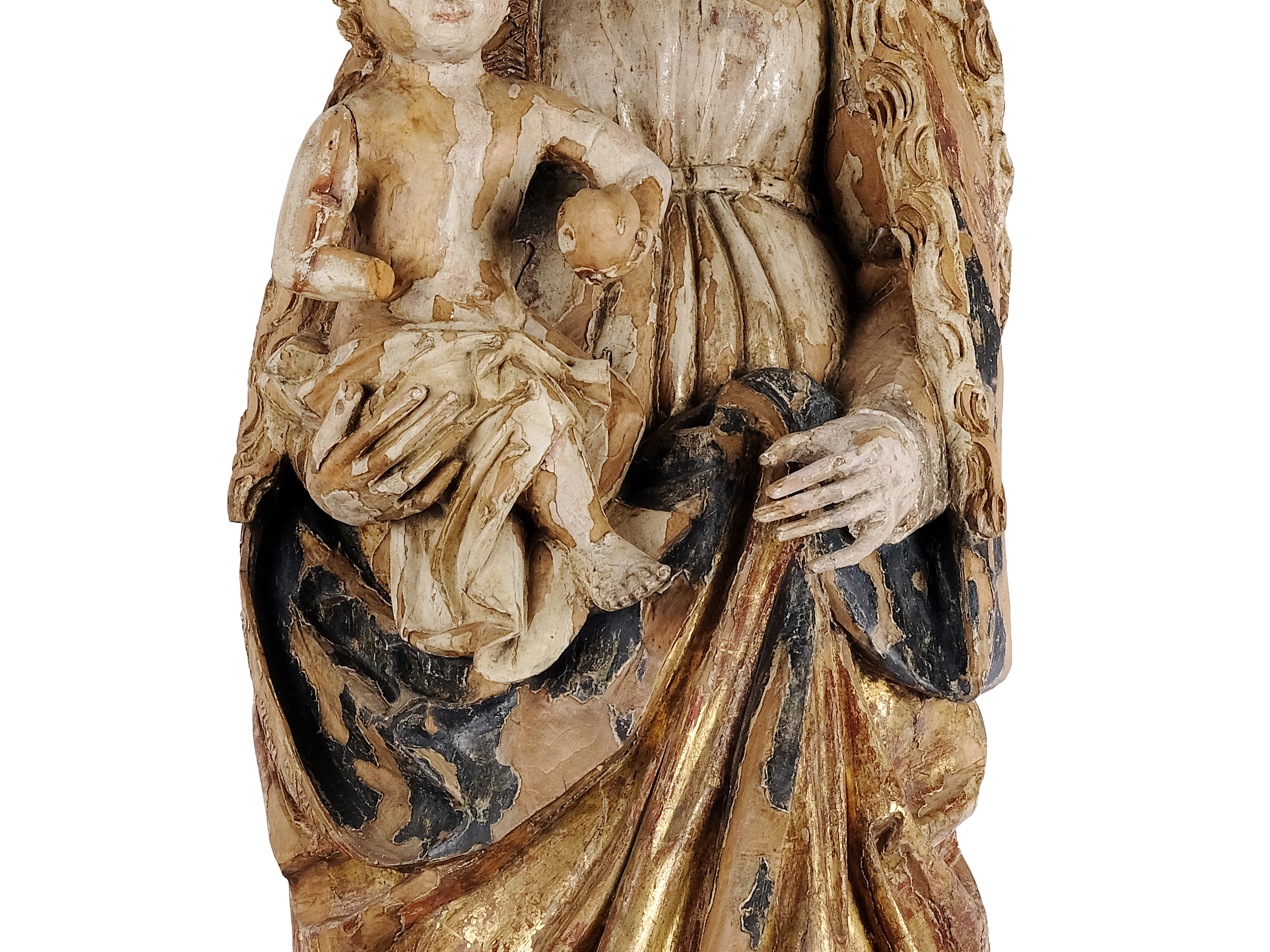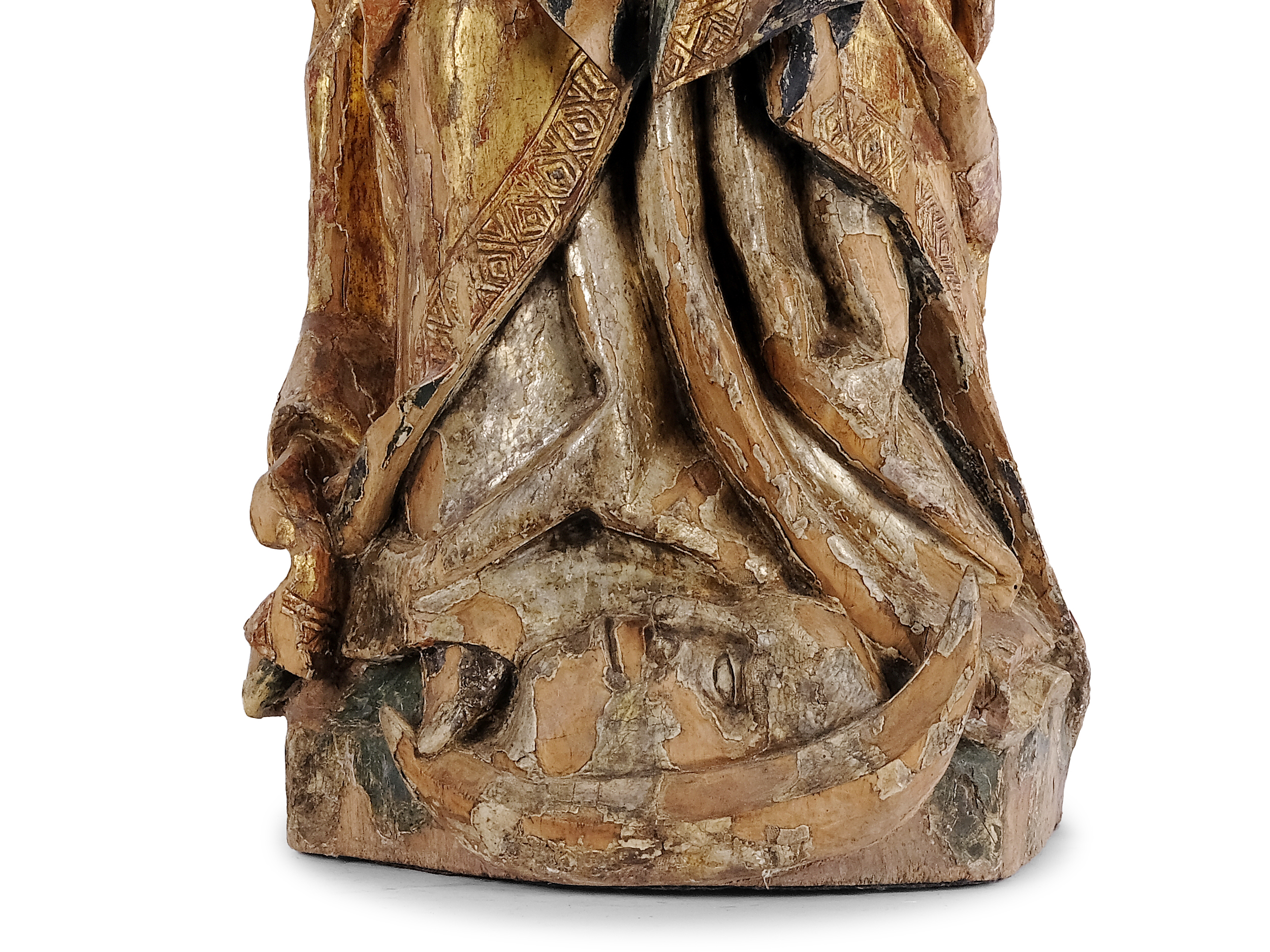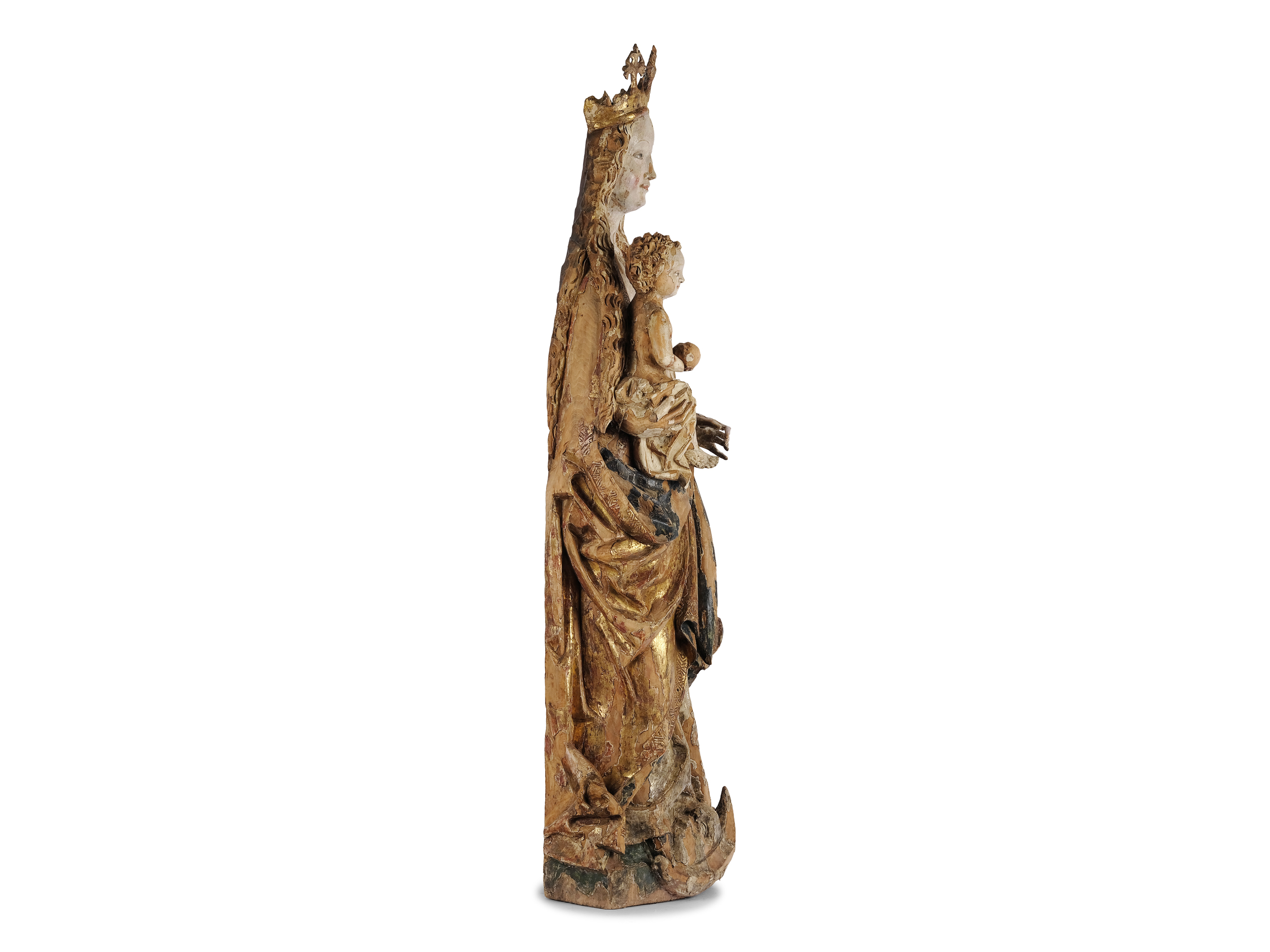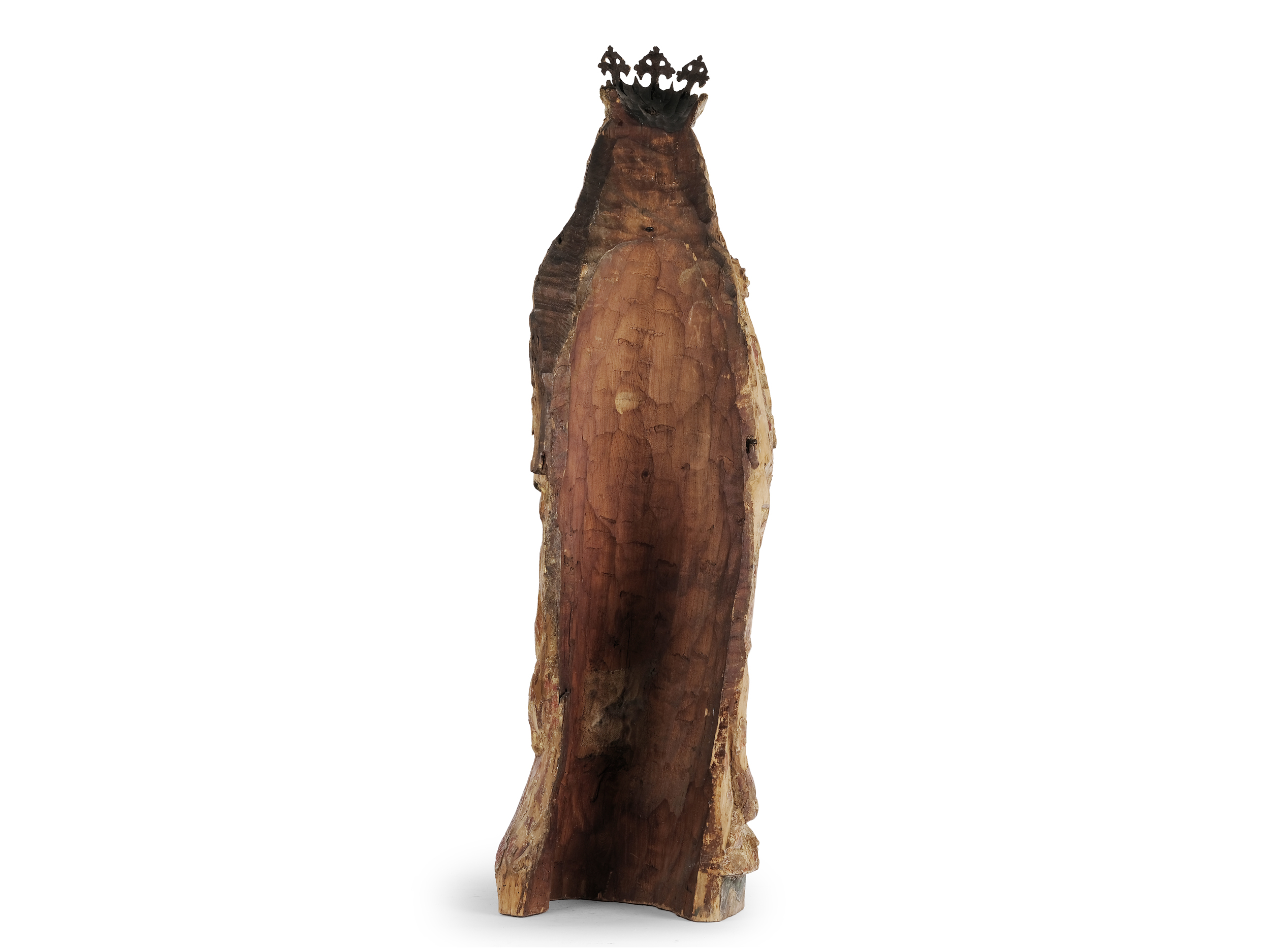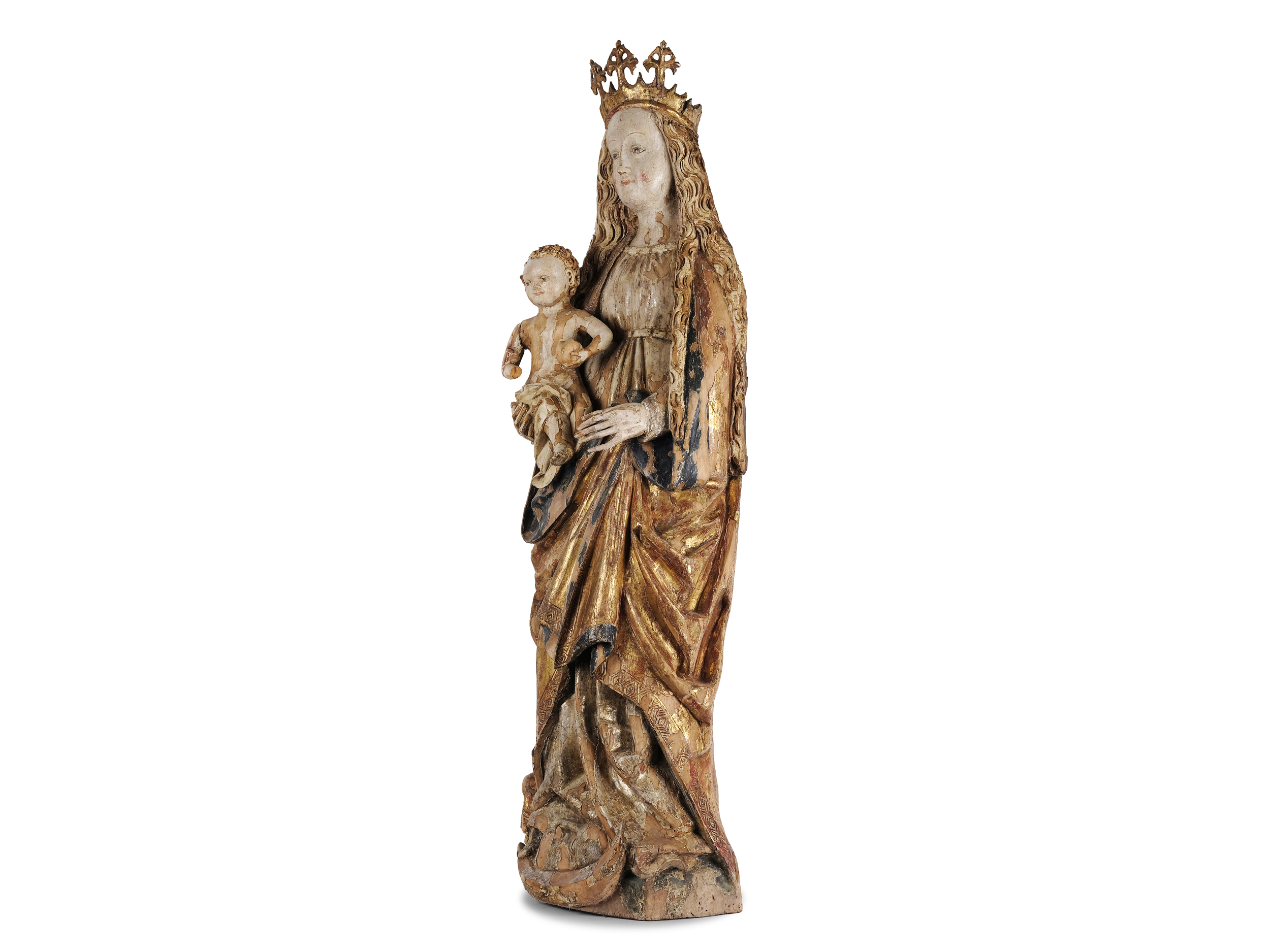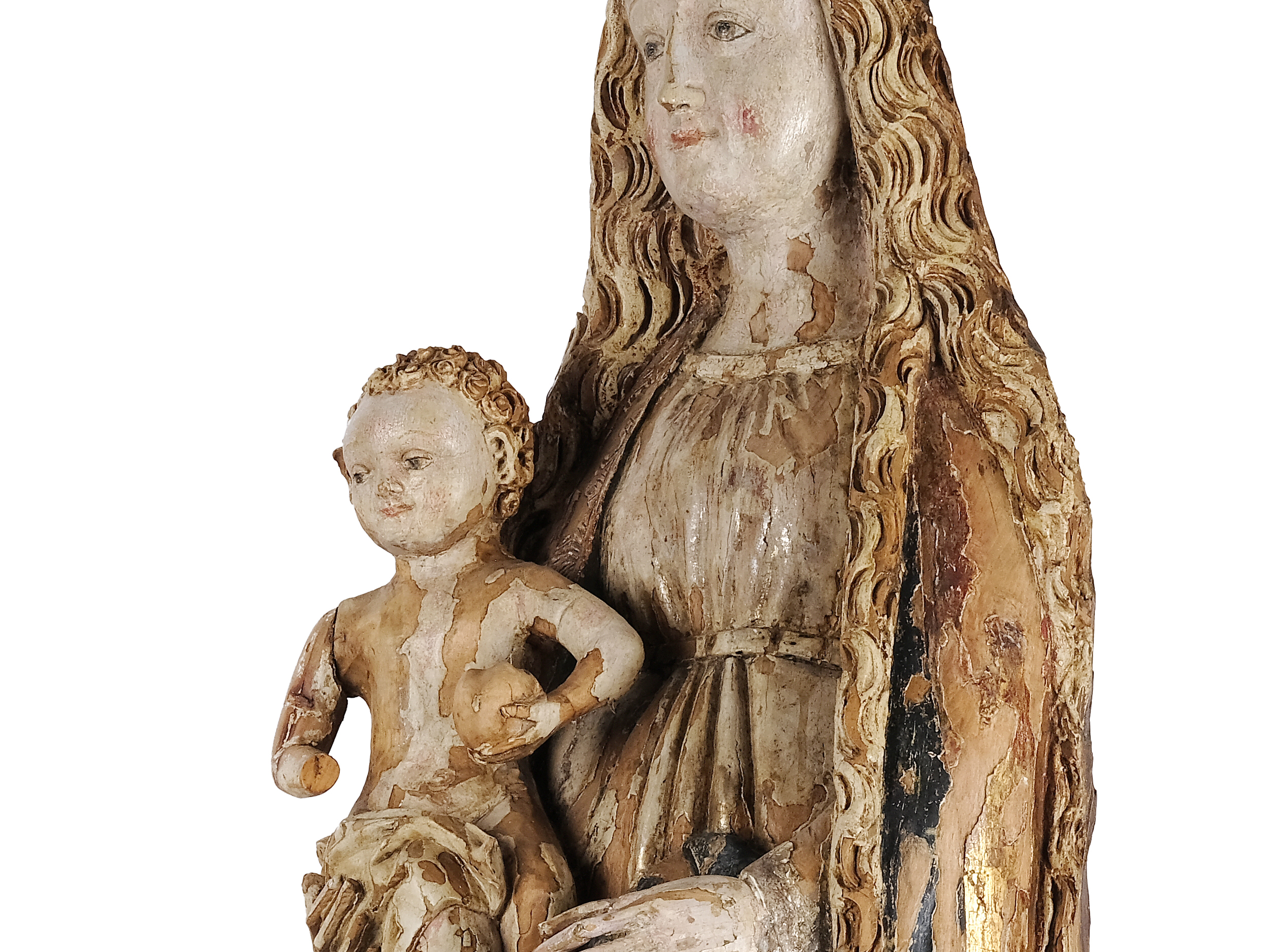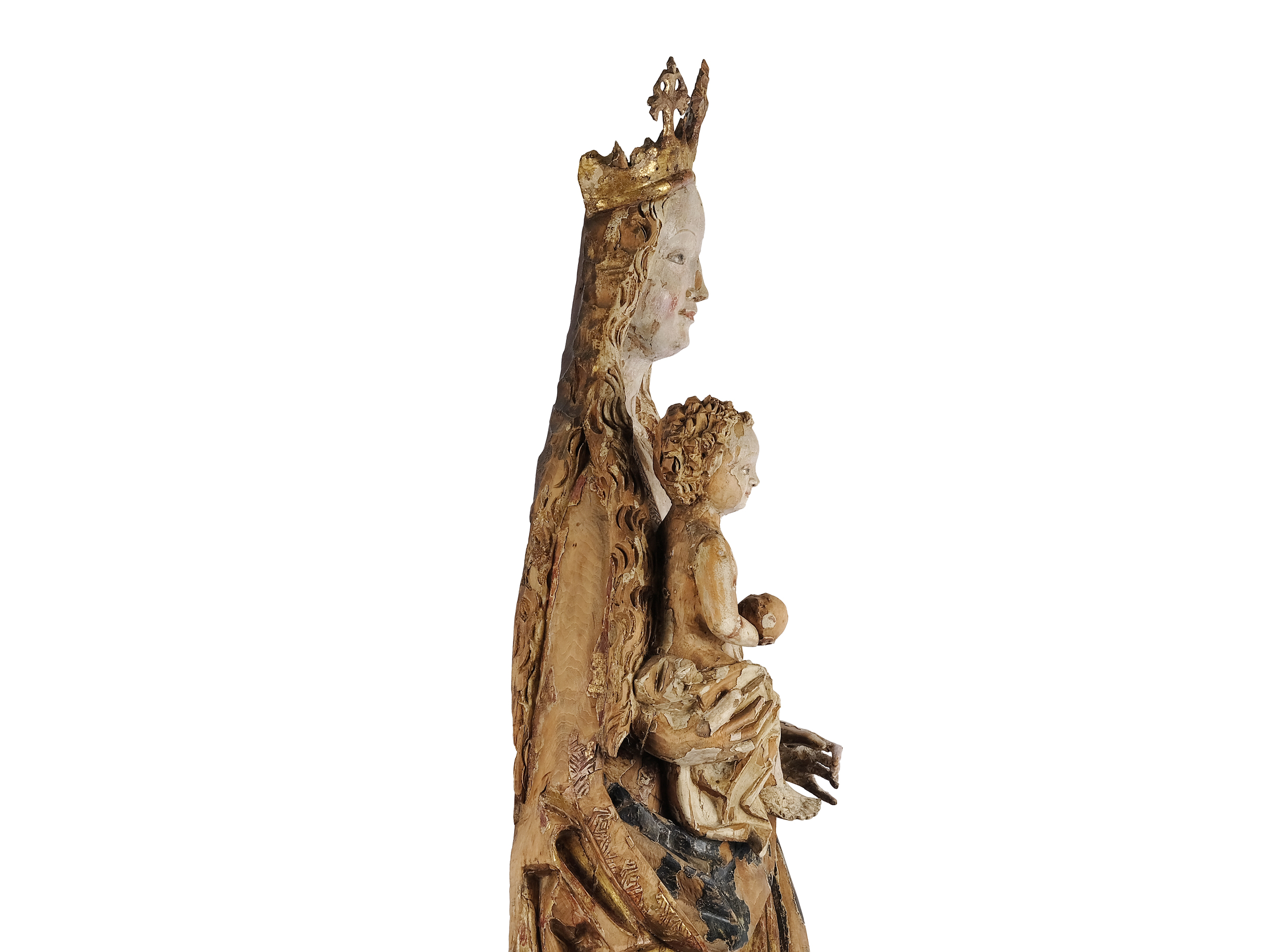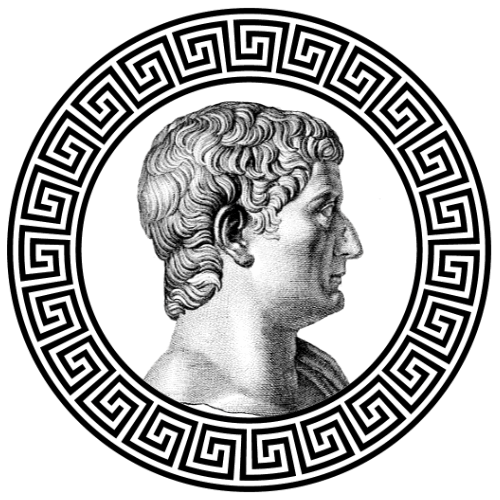Crescent moon Madonna
19th Tiberius Auction
Crescent moon Madonna
Starting price:
€ 20.000
- USD: 22.960 $
- GBP: 17.556 £
Estimated price: € 30.000 / 60.000
Additional information
| lowestimate | |
|---|---|
| highestimate |
Crescent moon Madonna
Master in the circle of Michael Pacher
(Mühlen ca. 1435 – 1498 Salzburg)
Salzburg
Around 1480
Carved lime wood
Old polychrome finish
Height 118 cm
This Madonna is an outstanding example of the distinctive style of the late Gothic period. Salzburg in particular was known for its artistic sculptures and continued to develop its flourishing tradition of religious sculptures in a significant manner during this period.
Mary stands in an upright and majestic posture, presenting the baby Jesus in her right arm. She does not hold Jesus directly, but with a cloth; a gesture that emphasizes his divinity. This indirect touch also reflects the reverence that medieval artists and viewers had for the holy child. Mary wears a crown with Gothic tracery carvings that emphasize her status as Queen of Heaven. Beneath the crown, her long hair falls gracefully in waves to her waist, referring to her femininity and her virginal, timeless beauty. She wears a flowing, belted dress covered by a cape. The luxurious exterior of the cloak is gilded, symbolizing divine light, while the interior—originally silver, now oxidized—once stood for purity. Together, these colors reflect Mary’s dual role as a caring mother and a royal figure of the heavenly kingdom.
The crescent moon
A defining element of this sculpture is the crescent moon beneath Mary’s feet, a symbolic sign closely associated with Marian iconography and apocalyptic visions. The face in the crescent moon refers to the Book of Revelation (12:1): “And a great sign appeared in heaven: a woman clothed with the sun, with the moon under her feet and a crown of twelve stars on her head.” This associates Mary with the woman of the Apocalypse, a figure of victory over darkness. Such representations were of particular significance to medieval audiences, who saw Mary not only as a loving mother but also as a powerful intercessor in the cosmic struggle between good and evil. According to popular belief, the face on the moon can also have a secular meaning, possibly capturing the image of the carver or a person in his workshop, thus immortalizing the creator in an otherwise divine context.
The Christ Child and His Mother
The Christ Child sits playfully in Mary’s right hand, his little legs cheekily crossed. His arms are outstretched: in one hand he holds an apple, identifying Christ as the new Adam, while the other hand is probably raised in a gesture of speaking or blessing, emphasizing his divine wisdom even in childhood. His face is framed by typical Gothic curls, which, together with his mischievous smile, give him a lively expression. This naturalism reflects the late Gothic ambition to lend religious figures human warmth without diminishing their divine essence.
Mary’s face embodies the Gothic ideal of female beauty. She has a high forehead—a feature accentuated by the fashion of the time, in which the hairline was often combed back—as well as almond-shaped eyes under delicate, arched brows, a narrow nose, and a small, closed mouth with youthful red cheeks. These features create a sense of timeless beauty and underscore Mary’s role as a figure of purity and maternal grace.
The drapery
The drapery of Mary’s clothing is particularly elaborate and contributes to the dynamic overall effect of the composition. The inside of the cloak is visible around Mary’s waist, where it forms large, voluminous bowl folds that lend depth and movement to the figure. Mary gathers part of her cloak near the center of her body, creating a cascade of complex folds and creases that convey a lively energy. At the same time, the masterful carving techniques characteristic of this period are highlighted. The dress underneath falls diagonally, drawing the viewer’s gaze to her right foot, which rests directly on the crescent moon, symbolizing Mary’s victory over sin and death.
Pacher’s environment
Due to the popularity of the subject towards the end of the 15th century, there are several comparable sculptures of crescent moon Madonnas. What is interesting here, however, is the detail of the borders meeting in front of the center of the body, which bear a resemblance to works by Friedrich Pacher (Neustift 1435 – ca. 1508 Bruneck). For example, in the “Throne of Grace between Saints Mark and Anthony the Hermit” from around 1480/90 (Belvedere Vienna, Prunkstall, Inv. No. 4880), where the cloak is gathered in front of the body, particularly in the case of Saint Mark. In the sculpture presented here, this is rendered more realistically, as Mary gathers the cloak with her hand. It is very likely that Friedrich Pacher was related to the important woodcarver Michael Pacher and also worked with him until around 1481. It is therefore possible that the master carver of this figure came from Michael’s circle, was familiar with Friedrich’s works, and borrowed from them.
This Madonna reflects the unmistakable craftsmanship of late Gothic sculptors, who combined devotional symbolism with idealized beauty and detailed design. Mary is depicted not only as the gentle mother of Christ, but also as a majestic queen and apocalyptic victor, standing triumphantly on the crescent moon—a figure of heavenly grace and human warmth at the same time.
Literature
Alexander von Hohenbühel, “Zur Frage der Verwandtschaft von Michael und Friedrich Pacher” (On the question of the relationship between Michael and Friedrich Pacher), in: Der Schlern, vol. 92 (2022), issue 3, pp. 36-38.
Nicolò Rasmo, Michael Pacher, Munich 1969.
South Tyrolean Cultural Institute Cultural Service (ed.), Michael Pacher und sein Kreis. Ein Tiroler Künstler der europäischen Spätgotik 1498–1998, Bolzano 1998.
